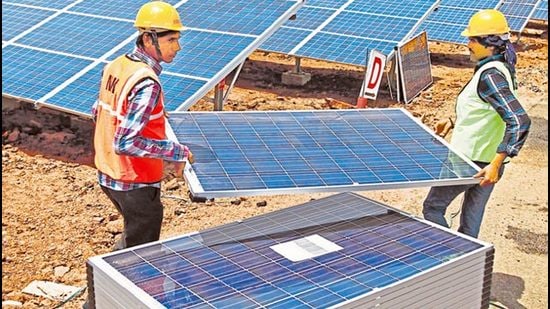Why the green energy corridor is critical for India
The investment in the infrastructure to synchronise the electricity produced from RE sources with that from conventional power stations will contribute to energy security, ensure ecologically sustainable growth, and spur employment generation
Last week, the Cabinet Committee on Economic Affairs approved ₹12,031 crore to set up the second phase of transmission projects to supply electricity from renewable energy (RE) projects to the national grid. The green energy corridor (GEC) will provide 20 GW of RE from Gujarat, Himachal Pradesh, Karnataka, Kerala, Rajasthan, Tamil Nadu, and Uttar Pradesh to the national grid. GEC is critical because it will ensure that the massive injection of electricity from RE sources doesn’t destabilise the national grid and that the frequency remains within the 49.90-50.05 Hz band. The government plans to complete the intra-state GEC with a target capacity of 9,700 km of transmission lines and sub-stations with a capacity to handle 22,600 MVA by June.

This investment comes against the backdrop of Prime Minister Narendra Modi pledging at the Conference of the Parties (COP26) summit in November that India will meet 50% of its energy requirements from RE by 2030 and increase non-fossil fuel power generation capacity to 500 GW by 2030. In November, India achieved its Nationally Determined Contributions target with a total non-fossil-based installed energy capacity of 157.32 GW, 40.1% of the total installed electricity capacity. At COP26, Mr Modi also pledged to cut India’s total projected carbon emission by 1 billion tonnes by 2030 and reduce the carbon intensity of the economy by less than 45% by the end of the decade (from 2005 levels) and achieve net-zero carbon emissions by 2070.
The investment in the infrastructure to synchronise the electricity produced from RE sources with that from conventional power stations will contribute to long-term energy security, ensure ecologically sustainable growth by reducing the carbon footprint, and spur employment generation. However, while India keeps its promise of cleaning up its power sector and pushing RE, the West also has to keep its part of the promise of providing adequate funding and technology to accelerate the pace of change and combat the climate crisis. Replacing fossil fuels with RE is essential to avoid the worst impacts of global warming and keep people and the economy safe.
Continue reading with HT Premium Subscription




